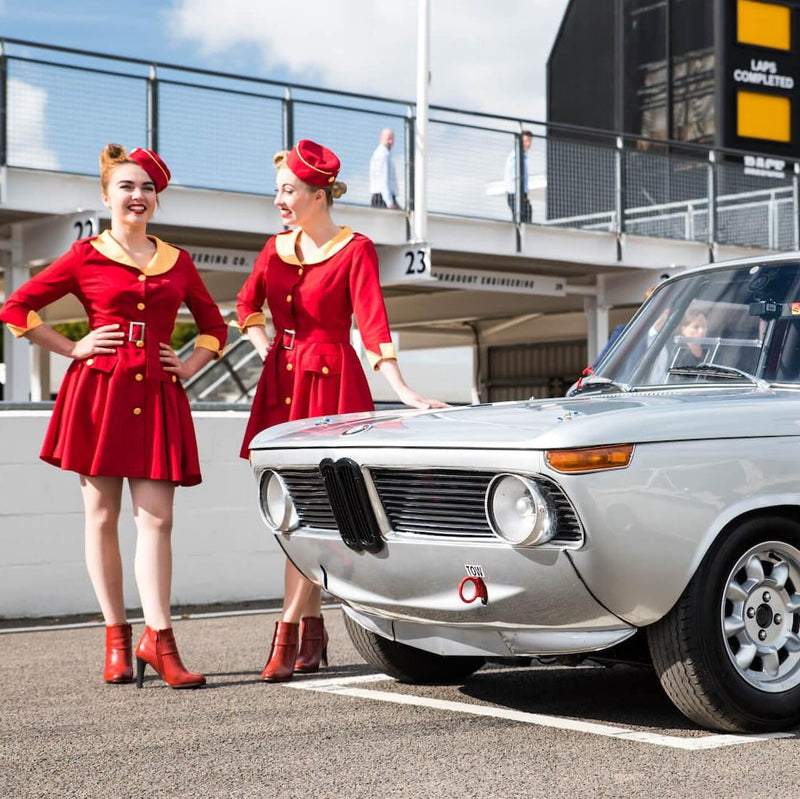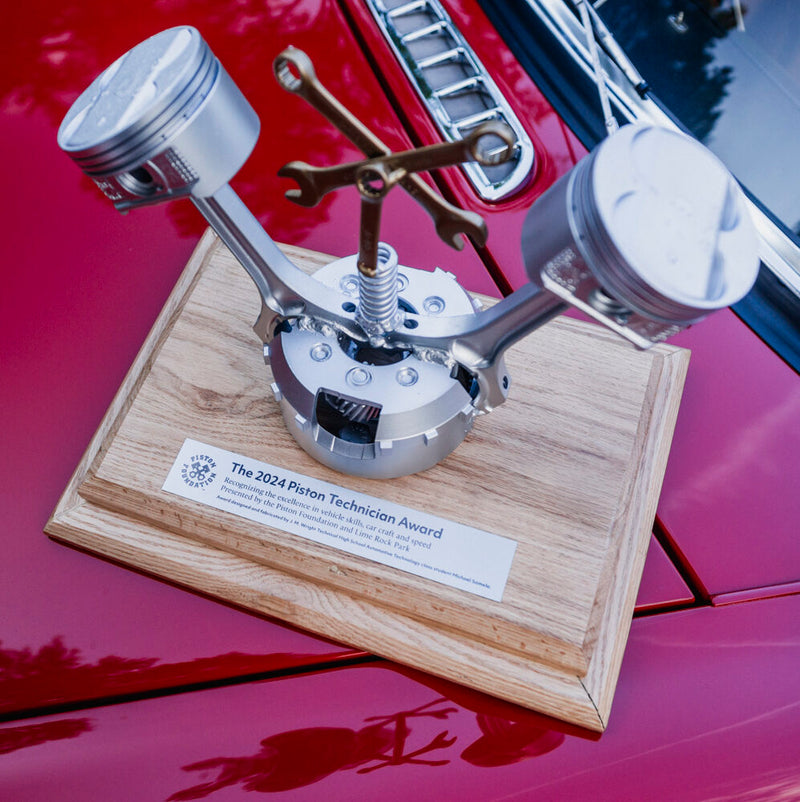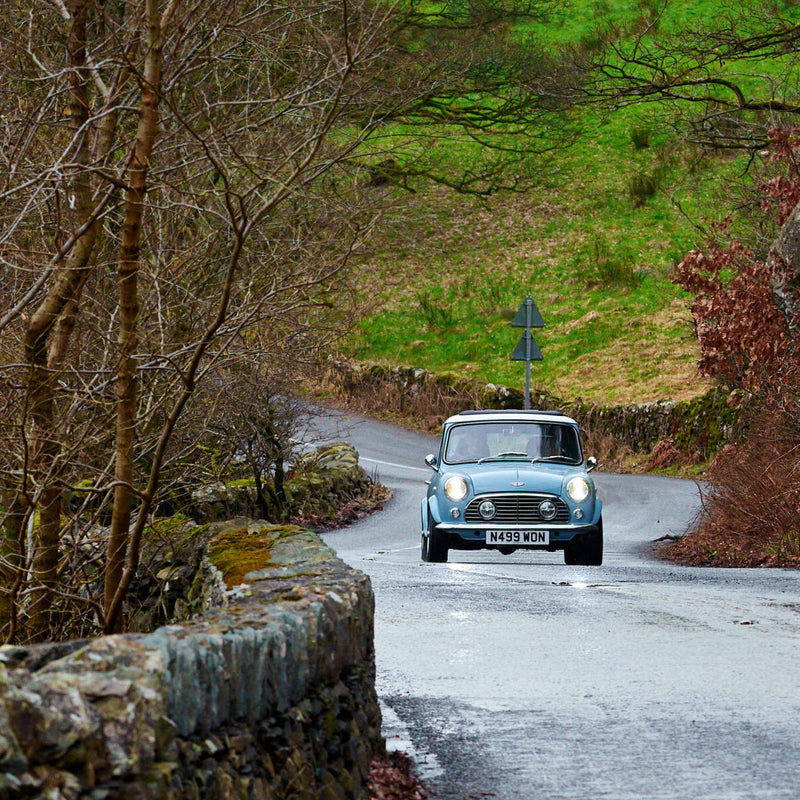The plush grounds of a palace made for a great place to display the nearly 200 cars taking part in the 90th anniversary edition of the famous Gaisberg Hillclimb event. Starting in 1929, for forty years the 8.6-kilometer course in Salzburg hosted a round of the popular European Hillclimb championship, and it was usually the last round of the season, with many a champion made here.
Pride of place outside the Hellbrunn Palace was a 1929 Mercedes-Benz 710 SS, but not just because it’s a looker: this was the actual car that won the inaugural event 90 years ago. The seven-liter beast was driven by a 21-year-old Max Graf Arco von Zinneberg up the gravel course in under nine minutes, but now a priceless antique, it was driven a little gentler in the 2019 reunion.



The opening of the nearby Salzburgring in 1969 saw the last edition of the Gaisberg Hillclimb… and that race should probably have been won by Peter Schetty in his Ferrari 212 E Montagna, just as he'd done in every one of the other seven races in that year's championship. However, with the title long since won, Ferrari wanted the Gaisberg organizers to pay an appearance fee of sorts for demonstrating the car to the Austrian crowds. It wasn't a small amount they asked for either, and the offer was declined and the locals never got to see the special car.




Schetty’s car was soon sold on and passed through a few hands until Egon Hofer became the proud owner in 1970, but when he lent it to a local exhibition to be displayed it was never given back. It was only reunited with its rightful owner when in 2016 someone came across it in Sweden, still with Hofer's name painted on the side. 50 years later and now in a proudly unrestored state, both Hofer and the local spectators finally got to appreciate the car again.
It was in some pretty extraordinary company too. The Jaguar XJ13—an unlucky number one might assume, seeing as the only prototype made was crashed almost to the point of total destruction—should be on the list of most stunning race cars ever made. It is of course not the original that’s joined the festivities, but the Proteus example is an almost exact replica and the five-liter V8 putting out 500bhp made this one of the most stunning cars to see take the climb.


But in pride of place against the back wall were a line of Porsches arranged for the company's annual “Porsche Legends @” series. In the 1960s Porsche was the dominant force in hillclimb racing and they came back to the Gaisberg mountain half a century since their last title win in 1968 with some incredible cars.
Way back in 1957 the EHC was the first fully FIA-sanctioned championship after the war, and so it attracted the absolute cream of the continent's racing crop, all intent on claiming the only international prize there was for the discipline. Developed from the 550 A Spyder, which in turn was a heavily modified 356, the 718 RSK (RennSport and K for the shape of the front suspension geometry), was one of Porsche's first real forays into pure-bred race cars, pictured above. The model is perhaps more well known for the three Targa Florio wins it claimed, the 1960 Sebring 12 Hours, and of course class victories at Le Mans. But six times in seven years the RSK—and its slightly improved successors, the RS 60 and RS 61—won the top “sports" class category as well.
The lightweight and aerodynamically efficient 356 B Carrera GTL was bodied by Abarth for the GT, class which it won for three years straight between 1961 and 1963.

In 1966, a young Eberhard Mahler took the nimble new 911 to one of its many, many championship wins, beating the likes of much more powerful Ferraris and Shelby Fords. And then Porsche began getting serious. At around 400kg, the 910/8 Bergspyder was a very lightweight and powerful car that even with much smaller engine than its Ferrari, Maserati, and Ford rivals, twice won the sports class. After its last race in 1969 it was wheeled into the storehouse, where it has remained untouched ever since.
But although the 910/8 was among Porsche's most successful prototypes of the era, it wasn't their most advanced. That accolade goes to the 909 Bergspyder, shown below. With the 275bhp, the two-liter flat-eight engine was still underpowered compared to its unlimited rivals in absolute terms, but instead of outright power Porsche worked to a different maxim: power to weight ratios. It was an all-important equation when the competition involved hairpins and hills, and the space frame chassis was constructed of aluminum tubing supporting body of composite materials weighing just 10kg. The suspension springs were made from titanium and the brake drums from beryllium. It didn't even have a fuel pump. Instead, Porsche engineers made a small tank that was pressurized at 10 bar (about 145psi). With a weight of just an incredible 384kg, including oil and fuel, the Bergspyder had an incredible 1.4 bhp/kg ratio.

It was only seen at two races though, and was never pitted against Ferrari's 212 E as after nine years of domination the Porsche works team pulled out of hillclimb racing to concentrate on the World Sportscar Championship—the company’s early-‘70s Le Mans chapter with the 917 is of course very well documented.
Porsches didn't stop winning on Europe's mountain races though. With privateers in various iterations of the 911, from Ss, RSs, RSRs, and then the turbo era of the French Almeras brothers in a 934 and a twin-turbo’d 935, Porsche cars won championships in the mountains until the early ‘80s.



The Gulf blue 911 2.5 S pictured above is the 13th of the 21 built, and is the car 1971 GT champion Willi Bartels used to try to defend his class title. Despite several podiums and a couple of wins though, he was beaten to the 1972 championship by Anton Fischhaber in a similar car. At the beginning of 1973 chassis 0987 was shipped out to the US, where the Joest Racing team finished 9th overall with it in the Daytona 24-hour race.
Recently bought back by Porsche, it's now a rolling museum exhibit… but when you write for Petrolicious you sometimes get to do amazing things. Driving this 2.5 S was definitely one of them. Not just on a private track somewhere either, but in front of several thousand classic car fans lining a specially laid out track around the center of Salzburg. It was only a demonstration run of course, but the 270bhp from behind is more than enough to make the semi-slicks, as wide as they were, slip on the cold tarmac under load. Add to that the glorious noise of the tuned flat-six in a car without soundproofing, and the smile only grew wider with each of the three laps I had the car for.



Nobody was driving particularly fast, but seeing the likes of the 1966 McLaren M1B and a couple of Alfa Romeo 8Cs cruising by is still a very fine sight to take in. There was also a rare view of the sublime lines of the Mercedes Benz 300 SLS Porter Special. Made from a burnt-out SL Gullwing in the ‘50s, it was raced extensively in America for a few years… and not so extensively at Goodwood in 2015. Thankfully there were no Listers in this event!


The main event took place early the next morning with a blast up the original hillclimb course to the 1288m peak. In the staging area outside a ruined old factory stood the gorgeous angular features of a Ferrari 512 M. Owner Walter Leis is quick to point out that the car is not original as it’s not a Ferrari chassis underneath, although most of its parts are. Watching it take the start, the V12 echoing in the trees, it didn't matter much to my ears. There's a reason prototype racers like the ones this car evokes are considered part of the glory years of motorsport.





The touring class had such gorgeous examples as the Abarth 1000 and a 1960 Porsche Devin D below, which are very rare machines to see in motion.



But there was even more. Porsche had brought a 718 RS 60, identical to the one that Heini Walter won the 1961 EHC with, and the actual one raced in a dozen non-championship races in Europe in 1962 by Jo Bonnier and Carlo Maria Abate, which included a few podiums. And it was there for me to take up the full, famous Gaisberg Hillclimb course before the main field.

I've driven a 917 replica before, as well as a fair few Porsches of varying antiquity and performance level, but the 718 felt very delicate compared to anything else from the marque. And with such an age and such a pedigree it seemed somehow wrong to put my foot right down to really wring its neck. Still, above 5,000 revs, the 1.6-liter four-cam pushed me forward at noticeable pace as the whole thing weighs a scant 570kg. But with the top of the windscreen right in my line of vision it was hard to see where the corner apexes were, and under 5,000 the engine just wouldn't catch properly, so it was a rather sedate run to the top. Still, with the views of the snow-capped Alps in the background and the smiles and waves of all marshals and spectators in the fore, it was a very special experience in a weekend chock full of them.
























































